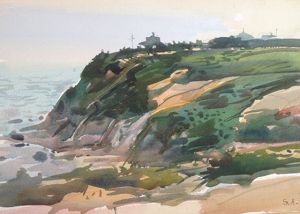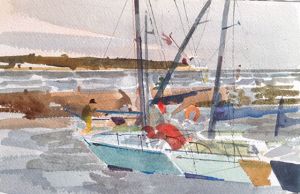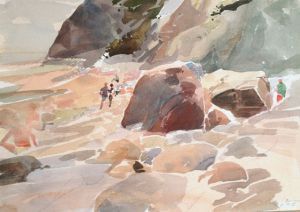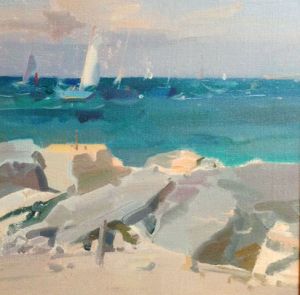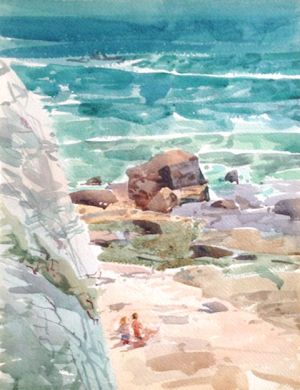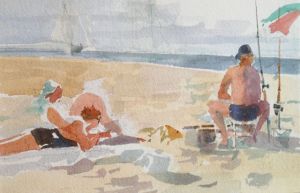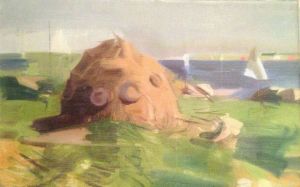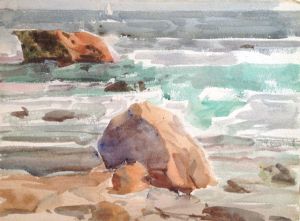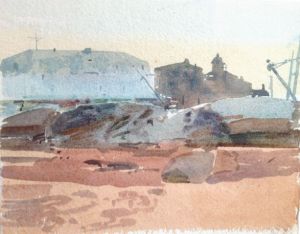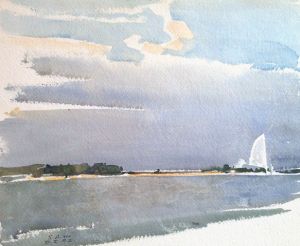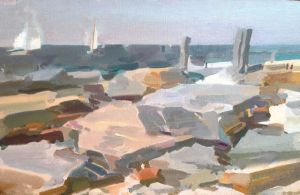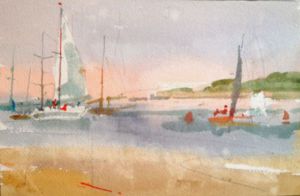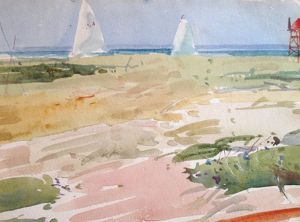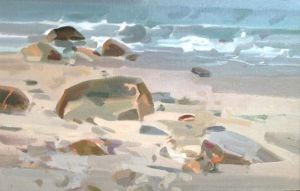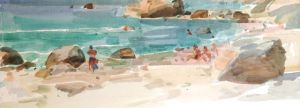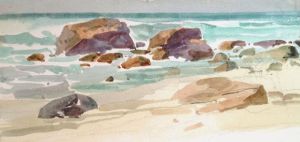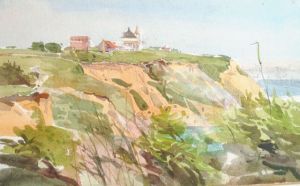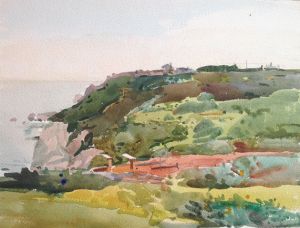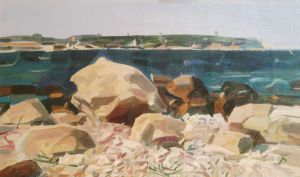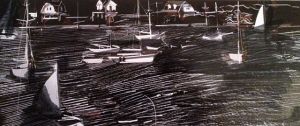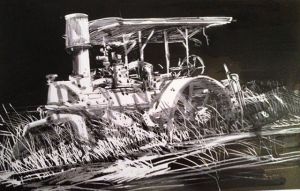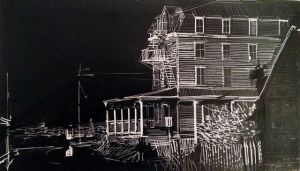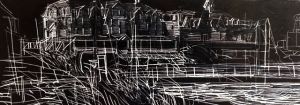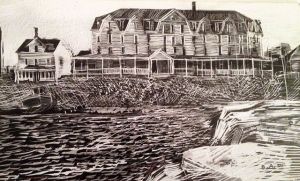Remembering Times Past:
Works by C. Sperry Andrews III Open at the Jessie Edwards Studio
Works in oil on canvas, watercolor, and scratchboard by the late C.Sperry Andrews, many never shown before, will be on exhibit at the Jessie Edwards Studio from July 12 through July 18. The opening reception is on Saturday, July 13, from 5-7 pm.
When he died in 2005, Andrews left over 5000 works, over 500 of them of Block Island from the 1950’s to the early 1980’s. The first show of Andrews’ work in the gallery was in the summer 2011. With this return exhibit, his works return us to the Block Island of the 1960’s and 1970’s. His delight in the scenery of Block Island – the boats, beaches, buildings, bluffs, old farm machinery – is rendered in a variety of techniques in which Andrews experimented, working almost entirely in “plein air.” Some are representational, some impressionistic, and others are near abstractions of form and color.
In both watercolor and oil, Andrews captures the many ways in which light plays across the contours of rocks and boulders. In one oil with the bluffs of Clayhead in the background, the eastern light and the angles of shadows bring the details of the boulders and rocks into sharp relief and dominate the foreground. Several scenes of the beach at Mohegan Bluffs are also studies of shadow and light. The dark sharp edges and smooth brown planes of boulders and rocks merge with the swirl of the teal green water that froths and eddies along the shore. In some, people strolling, sitting, or wading are dabs of color that blend into the rocks, sand and water, becoming a part of the larger dynamic scene.
The decades of growth and development, both natural and human, are absent from the pristine views of Mohegan Bluffs that Andrews painted in the 1970’s. In one watercolor looking west, the soft eastern light casts dappled colors of rose, yellow, grey, and green that spill down to the water below. In the far distance against a pale sky, there are dim silhouettes of a few buildings. That is all. These structures are brought into closer view in another watercolor in which the dark green shrubbery and the clay fissure of the bluffs meet grey shadows on the beach below that merges with the grays, blues, and pale turquoise of water and sky. The simple gables of the cottage and a slender flag pole can be seen, and beyond a distant row of green, the shadowy form of the Ark, the main building of the 1893 Vaill Hotel, razed in 1986, blends into the sky.
Andrews’ scenes of sailboats and beaches are sun-drenched idylls of summer in the 1970’s. Several are of boats entering the cut. In one near-abstraction, sailboats seem to shimmer in the soft light as they slip through the channel past Bean Point. In another, children play in the translucent water of a tidal pool on the sand, a white dinghy beached nearby, while two women at tide’s edge watch the approach of the ferry across deep blue-green water. Still another, shows two women lying in the sand in the foreground, a man sitting nearby with his fishing poles upright in the sand while a sailboat drifts along the shoreline, its sails at one with the clouds along the horizon. There are a few grey days in this idyllic series. A couple wades or clams in the shallows at low tide under an overcast sky. In another, all action in quick, sweeping brushstrokes, the crew on a sailboat tries to anchor in Old Harbor while a choppy sea sends waves crashing against the breakwater.
In dramatic contrast to the nuances of color and strokes of the watercolors and oils, the scratchboard pieces from the 1960’s are full of texture and chiaroscuro effects. (Scratchboard is a technique in which a surface is covered with gesso, wax, or paint, which is then covered with ink. The ink is scratched into with various implements to create the image.) The National Hotel is the main subject of three pieces. One is a view of the front from the breakwater which highlights the hotel’s clapboard, gables, and eaves, the tangled brush of beach grass and rippling waves in the foreground. Another is a view of the side porch seen from Dodge Street brings out the lines of the fire escape and surrounding shrubs. A striking view of boats shows the spidery lines of the mast and shrouds of a sailboat in Old Harbor against the denser texture and mass of the ferry The Yankee. Andrews’ affinity for old farm machinery comes to life in a scratchboard that illuminates the intricate, wheels, structure, and gadgetry of an old tractor left in a field, tall spiky grass growing around it to become one entity.

